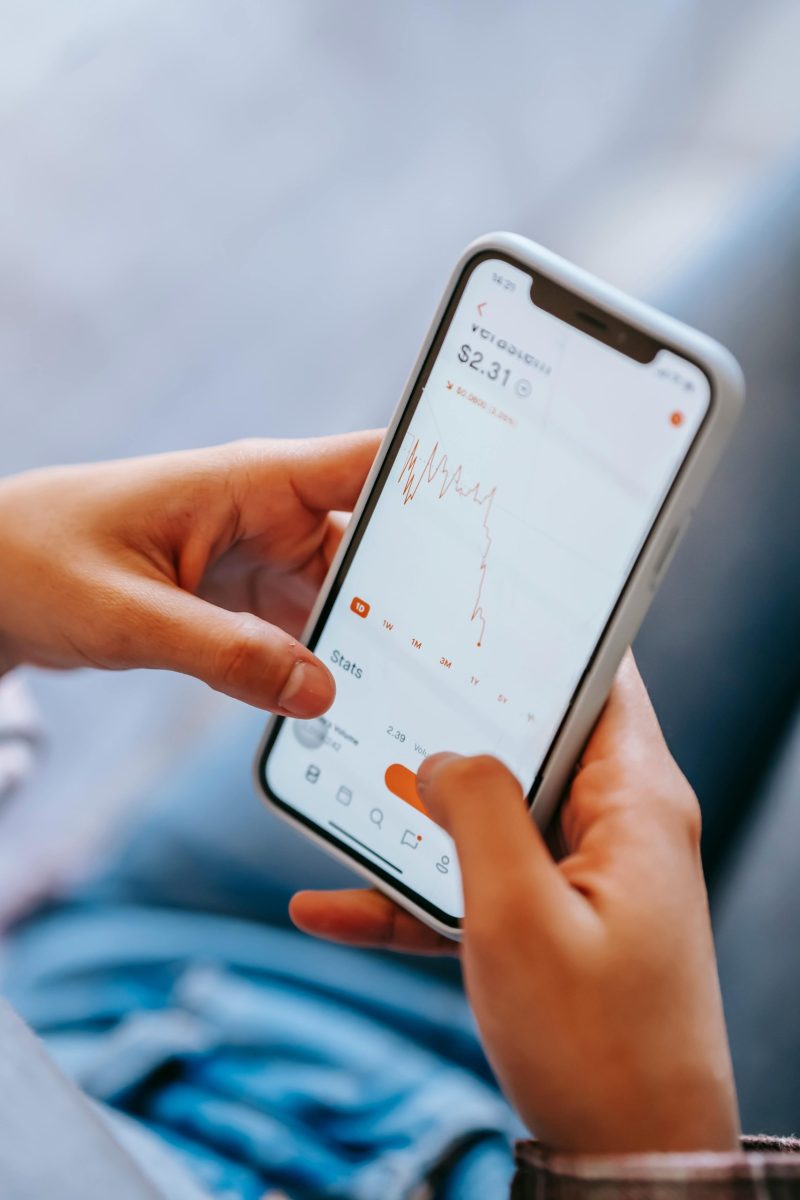Introduction to Personal Finance Apps in Australia

In the heart of Australia’s bustling economy, a significant transformation is underway, marking a pivotal shift from traditional banking and financial advising to innovative digital solutions. This evolution is not just a trend; it’s a revolution in how Australians manage their finances, driven by a growing reliance on technology. Personal finance apps are at the forefront of this change, offering tools that empower individuals to take control of their wealth management with unprecedented ease and efficiency.
The Digital Shift
Once, the realm of financial management was navigated through face-to-face consultations and paper-based transactions. Today, the landscape is dramatically different. Australians are increasingly turning to personal finance apps, drawn by the promise of real-time financial insights, budgeting tools, and investment opportunities, all at their fingertips. This shift is not merely about convenience; it’s about harnessing the power of technology to make informed financial decisions and secure a prosperous future.
As we delve deeper into the world of personal finance apps, it becomes clear that these digital tools are more than just a passing trend. They are the new standard for financial management in Australia, offering a blend of accessibility, security, and sophistication that traditional methods can no longer match. Embrace the digital revolution, and take the first step towards mastering your financial destiny.
Empowering Financial Management Through Personal Finance Apps

With the digital revolution reshaping Australia’s financial landscape, personal finance apps have emerged as indispensable tools for wealth management. These apps offer a comprehensive suite of features designed to empower users with the knowledge and capabilities needed to navigate their financial journey with confidence. From budgeting and expense tracking to investment analysis and superannuation management, these digital platforms are transforming the way Australians approach their finances.
- Budgeting and expense tracking: These apps provide a clear overview of your spending habits, helping you to identify areas where you can cut back and save. By categorising expenses and setting budget limits, users gain a real-time insight into their financial health, making it easier to achieve their savings goals.
- Investment tracking and analysis: For those looking to grow their wealth, these tools offer detailed analysis and tracking of investment portfolios. Users can monitor performance, assess risk, and make informed decisions to optimise their investment strategy.
- Superannuation management: Understanding and managing your superannuation is crucial for securing a comfortable retirement. Personal finance apps provide features that help track your super balance, compare fund performance, and ensure you’re making the most of your retirement savings.
- Debt management and reduction: Tackling debt is a key step towards financial freedom. These apps offer strategies and tools to help users prioritise debts, create repayment plans, and track progress towards becoming debt-free.
By leveraging the capabilities of personal finance apps, Australians can take a proactive approach to managing their finances. These digital tools not only simplify financial management but also provide the insights and strategies needed to enhance financial well-being. Embrace the power of technology and embark on a journey to financial mastery.
The Role of Personal Finance Apps in Wealth Management

Personal finance apps are revolutionizing wealth management, offering a suite of tools that cater to long-term financial planning, savings optimization, and tax management. These digital platforms empower users to set and achieve ambitious financial goals, ensuring a brighter economic future. With intuitive interfaces and real-time data, managing personal finances has never been more accessible or effective.
- Long-term financial planning: These apps excel in helping users craft and adhere to a financial roadmap. By setting clear, achievable goals, individuals can monitor their progress and adjust their strategies, ensuring they remain on track to meet their long-term objectives.
- Savings optimization: Through innovative techniques and tools, personal finance apps guide users in maximizing their savings. Features such as automated savings plans and personalized budgeting advice make it easier to identify opportunities for saving, even amidst financial constraints.
- Tax management: Navigating the complexities of tax can be daunting. Personal finance apps simplify this process, offering features that assist with tracking expenses, deductions, and providing insights into potential tax savings. This not only helps in staying compliant but also in maximizing returns during tax season.
By harnessing the capabilities of personal finance apps, individuals are equipped with the knowledge and tools necessary for effective wealth management. These apps not only streamline financial planning and savings but also demystify tax management, making them indispensable in the pursuit of financial well-being. Embrace the digital revolution and take control of your financial future with confidence.
Security Concerns and Data Privacy in Personal Finance Apps

In the digital age, the security of financial data and the privacy of users are paramount. Personal finance apps employ a variety of robust security measures to safeguard financial information. Encryption, multi-factor authentication, and regular security audits are standard practices, ensuring that users’ data remains secure against unauthorized access. Furthermore, these apps adhere to stringent data privacy regulations, reflecting their commitment to protecting user information.
- Encryption: A fundamental layer of security, encryption transforms sensitive data into unreadable code, accessible only through a decryption key.
- Multi-factor authentication (MFA): MFA adds an extra layer of security by requiring users to provide two or more verification factors to gain access to their accounts.
- Regular security audits: These audits are crucial for identifying and mitigating potential vulnerabilities, ensuring the app’s defenses remain robust over time.
The importance of data privacy cannot be overstated. In compliance with local regulations, personal finance apps implement comprehensive policies to manage and protect user data responsibly. These measures not only comply with legal requirements but also build trust with users, reassuring them that their financial information is in safe hands. By prioritizing security and privacy, personal finance apps empower users to manage their finances with confidence, knowing their data is protected.
Choosing the Right Personal Finance App

Identifying the perfect personal finance app requires a keen understanding of one’s financial landscape and aspirations. It’s not merely about picking the most popular option; it’s about finding a tool that aligns with your unique financial journey. Consideration of individual needs and goals is paramount. Whether it’s budgeting, investment tracking, or superannuation management, the app must cater to your specific requirements. Moreover, the comparison of popular personal finance apps unveils a spectrum of functionalities designed to address diverse financial scenarios. From user-friendly interfaces for budgeting novices to advanced analytical tools for seasoned investors, the variety is vast.
- Factors to consider: Assess your financial goals, the complexity of your financial situation, and the level of guidance you seek. An app’s features should resonate with your personal finance strategy.
- Comparison of apps: Delve into the features, costs, and compatibility of various apps. Some excel in budgeting and expense tracking, while others shine in investment management or debt reduction.
- User reviews and ratings: They offer invaluable insights but require discernment. Look beyond the overall rating; read reviews to understand the context of users’ experiences. Pay attention to comments on usability, customer support, and any recurring issues.
Choosing the right app is a step towards financial empowerment. It’s about leveraging technology to craft a brighter financial future. With the right tool, managing your finances becomes not just simpler, but also more effective, paving the way for achieving your financial goals with confidence.
Choosing the Right Personal Finance App
With a plethora of personal finance apps available, selecting the right one can seem daunting. Yet, the key lies in understanding your financial needs and goals. Whether it’s budgeting, investing, or saving for retirement, there’s an app tailored to your aspirations. Comparing popular apps involves examining features, user interface, and integration capabilities with your financial institutions. Moreover, user reviews and ratings offer invaluable insights, revealing real-world experiences and potential pitfalls. However, it’s crucial to discern between genuine feedback and isolated incidents, focusing on consistent trends across reviews.
- Identify your financial goals: Different apps excel in various areas, such as budgeting, investing, or debt management. Choose one that aligns with your primary objectives.
- Compare features: Look for apps that offer the functionalities you need, such as expense tracking, investment analysis, or tax management.
- Assess user reviews: Ratings and reviews can provide insights into an app’s usability, effectiveness, and any recurring issues. Look for patterns in feedback to gauge overall satisfaction.
Choosing the Right Personal Finance App
With a plethora of personal finance apps available, selecting the right one can seem daunting. Yet, the key lies in understanding your financial needs and goals. Whether it’s budgeting, investing, or saving for retirement, there’s an app tailored to your aspirations. Comparing popular apps involves examining features, user interface, and integration capabilities with your financial institutions. Moreover, user reviews and ratings offer invaluable insights, revealing real-world experiences and potential pitfalls. However, it’s crucial to discern between genuine feedback and isolated incidents, focusing on consistent trends across reviews.
- Identify your financial goals: Different apps excel in various areas, such as budgeting, investing, or debt management. Choose one that aligns with your primary objectives.
- Compare features: Look for apps that offer the functionalities you need, such as expense tracking, investment analysis, or tax management.
- Assess user reviews: Ratings and reviews can provide insights into an app’s usability, effectiveness, and any recurring issues. Look for patterns in feedback to gauge overall satisfaction.
How to Get Started with a Personal Finance App

Embarking on the journey of financial management through a personal finance app is a transformative step towards achieving financial health. The process, while straightforward, requires thoughtful consideration to ensure the app aligns with your financial goals and lifestyle.
Selecting the Right App
Begin by identifying your financial needs. Are you looking to track expenses, manage investments, or save for retirement? Compare apps based on these criteria, paying close attention to user reviews for insights into real-world application and potential challenges. This initial research is crucial in finding an app that not only meets your needs but is also enjoyable to use.
Downloading and Setting Up
Once you’ve chosen an app, download it from a trusted source. During setup, you’ll likely be prompted to input financial details such as income, expenses, debts, and assets. Approach this step with accuracy to ensure the app provides meaningful insights and recommendations.
Effectively Using the App
To truly benefit from your personal finance app, regular interaction is key. Update your financial information as changes occur to keep the app’s insights relevant. Utilize budgeting tools to set and track spending limits, and explore investment features to make informed decisions about your financial future.
Avoiding Common Pitfalls
A common mistake is neglecting app notifications or alerts. These are often designed to inform you of important financial updates or opportunities for savings. Additionally, avoid becoming overly reliant on the app without understanding the financial principles behind its advice. Knowledge empowers you to make informed decisions beyond the app’s capabilities.
By carefully selecting, setting up, and actively using a personal finance app, you can enhance your financial literacy, track and achieve financial goals, and ultimately, secure your financial well-being. Remember, the most powerful tool in wealth management is your commitment to understanding and improving your financial health.
In Closing
Embrace the digital finance revolution with confidence. This shift promises not just convenience but a new era of financial empowerment and security. Through a blend of innovative budgeting, investment, and savings tools, personal finance apps offer a roadmap to financial well-being, balancing the ease of technology with the complexities of personal wealth management. As Australians navigate this digital landscape, the choice of the right app becomes a cornerstone of effective financial strategy. Let this be your call to action: to harness these digital tools in pursuit of financial literacy, independence, and growth, securing a prosperous future in the digital age.

Ayesha Brueckner is your typical 24 year. Carrying a mountain of student debt. Looking at house prices and wondering if buying one will ever be possible. Looking for income solutions outside of a weekly wage. Join her on her investment and wealth research journey.

